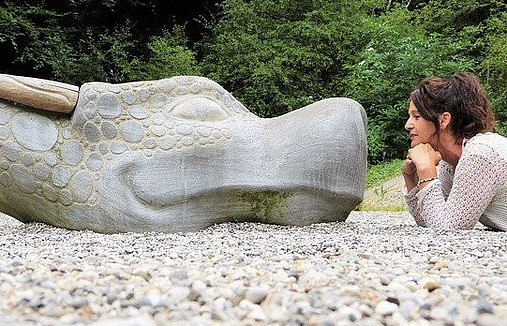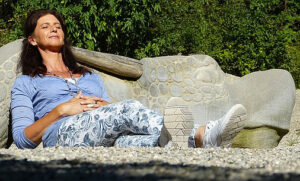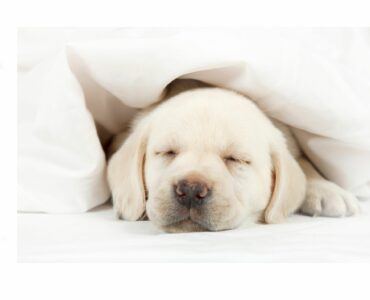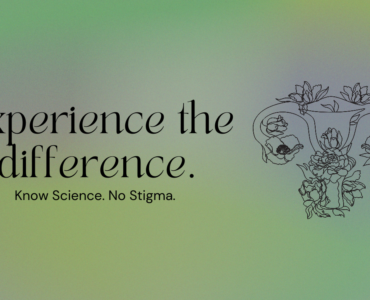 Summer has already begun, and the heat is starting to be felt in most continental United States. Some areas experience an increase in temperatures compatible with desert areas, with an additional component that makes it even worse, the high humidity.
Summer has already begun, and the heat is starting to be felt in most continental United States. Some areas experience an increase in temperatures compatible with desert areas, with an additional component that makes it even worse, the high humidity.
For women who have begun to notice hot flashes, the situation becomes unbearable with the sensation of excessive heat. I have not suffered from those hot flashes for some time but believe me, I know exactly how it feels.
Today, while walking with a colleague of mine for lunch, she commented on struggling with hot flashes, which the summer had exacerbated. So we had a nice lunch, and I took the opportunity to share some experiences and tricks that helped me feel better and probably eliminate them forever. So I thought it´ll be a good idea to share these on my blog.
Here we go!
What about Hot flashes?
Hot flashes and night sweats are among the most annoying aspects of perimenopause and menopause.  You may feel besieged, never sure when the next one will arrive, bathing three times a day, and still feel like you’ve turned into an oven. Fortunately, some solutions are very effective based on evidence and testimonials from other women.
You may feel besieged, never sure when the next one will arrive, bathing three times a day, and still feel like you’ve turned into an oven. Fortunately, some solutions are very effective based on evidence and testimonials from other women.
Hot flashes are the most common symptom during perimenopause and menopause. They affect as many as 60% to 80% of women, but they may be more intense or last longer for some women.
The hot feeling emanates from within and usually begins in the upper chest and face and then spreads throughout your body. A hot flash lasts two to four minutes and occurs anywhere from once a day to once an hour. The heat may be so intense that you sweat but then feel chilled once the hot flash subsides. Some women feel heart palpitations or anxiety during a hot flash.
Hot flashes that occur while you are asleep are known as night sweats. You may wake up covered in sweat. Typically, this can happen at least once a night and sometimes more often. Not only do night sweats interrupt sleep, but the lost sleep can also make it difficult to concentrate the next day. Night sweats and the resulting sleep disruptions also affect your mood.
Hot flashes and night sweats usually continue for a median of seven to 10 years.
 That means about half of women have them for a longer time and half for a shorter time.
That means about half of women have them for a longer time and half for a shorter time.
Surprisingly, although hot flashes are common, researchers don’t know what causes them. The fluctuation of estrogen levels must play a role, but it is not the only trigger.
Start with your wardrobe. Wear lightweight, loosely woven clothing designed to “wick away” moisture, such as polyester and nylon sportswear.
Dress in layers so that you can shed a jacket or sweater if you have a hot flash.
Try to keep your home as cool as possible, especially your bedroom at night. Use light sheets and blankets instead of flannel sheets and heavy bedding. If you no tice particular triggers, such as hot drinks or spicy foods, avoid consuming them.
tice particular triggers, such as hot drinks or spicy foods, avoid consuming them.
It can also be a great time to re-commit to healthy habits. If you smoke, here’s one more reason to cut back or quit: The more cigarettes you smoke, the more severe your hot flashes are likely to be. Also, if you are overweight or obese, you may have more frequent hot flashes. And try to find ways to reduce anxiety and stress. A study of white and African American women found that those with the highest anxiety levels reported five times as hot flashes than those with the lowest anxiety levels.
Several small studies suggest that deep breathing, the kind in which you breathe from the abdomen rather than the chest, will help relieve anxiety and reduce the frequency of hot flashes. In addition, exercise is a great way to try to reduce weight and lower stress levels. It helps reduce the severity and frequency of hot flashes and has many other benefits as you enter perimenopause.
Work with your gynecologist to determine, if needed, and the best type of hormone therapy.
Personally, not a fan of hormone therapy, but in many cases, it is unavoidable. Many options exist today. Supplemental estrogen is available as a skin patch, a pill, or a vaginal suppository or ring. (A lower-dose estrogen ring is also available to treat vaginal dryness.) In addition, some products come as creams or sprays that you can apply directly to the skin.
Hormone therapy has various risks, so be sure to talk with your gynecologist and consider your complete medical history.
Be mindful, observe and let go.
 As difficult as it may seem, if you train your mind to deal with hot flashes, maybe that’s the most effective solution you can find. Being able to appreciate my sensations from an observer perspective helped me a lot. Sure, it’s not so easy to disassociate yourself from the effect. But our mind can do it when we train in mindfulness.
As difficult as it may seem, if you train your mind to deal with hot flashes, maybe that’s the most effective solution you can find. Being able to appreciate my sensations from an observer perspective helped me a lot. Sure, it’s not so easy to disassociate yourself from the effect. But our mind can do it when we train in mindfulness.








Thank you for this great article on managing night sweats and hot flashes. I can tell you from personal experience that turning down the temperature at night really helps to stay cool and dressing in layers helps as well. I’m surprised that hormone treatments were still available…I’ll have to pass that on to few people I know! I found using a folding wood hand fan really helped to alleviate the suffering! They can be ordered online for less than $1 each.
Hi, Cynthia! Thank you very much for reading my article and sharing your personal experience. Yes, hormone treatments are still available, and there are substantial scientific advances around these. Jjjj! I’ve used those hand-fans for much of my life to deal with Caribbean high temperatures, and they for sure are lifesavers. Again, thank you for stopping by.
This is a great post detailing how to handle dealing with hot flashes and night sweats. I personally am not anywhere near menopausal age, but as I’ve gotten older I’ve been dealing with night sweats more and more frequently and have even dealt with having hot flashes occasionally. It’s quite strange, as I used to be always feel like I was cold but I tend to be on the warmer side now. I will try utilizing some of these tips you have outlined, as they seem like they will make things easier for me.
Hey, Rachel!
Thank you for stopping by. I appreciate your comment. Yes, determining the age at which you will begin your transition is not as simple. It depends on many factors, including genetic. However, statistics are informative to accommodate priorities and research findings. Menopause is just one point in time where you say, “It’s been a year since my last period.” The whole process is more complicated, and for many women, it may start as early as in the mid-30s. You may notice some changes in your cycles, just like you mentioned. Transitioning to menopause is a multi-stage process characterized by three main phases: pre-menopause, peri-menopause (which goes before-and-after you arrive at menopause ), and post-menopause. I am glad you are considering using some of the tips I shared in my article. I hope they help you. Come back and share your experiences 🙂
Thank you for very interesting article. Hot flashes are extremely uncomfortable and with warm summer its getting even worse. Im struggling with this for a while now and I haven’t find perfect solution yet. But your post is very helpful, I didn’t realized before that smoking or spicy food can increase this feeling. Looking forward to test your advices and recommendations in practice.
Hello, Cogito!
Many thanks for reading my article (I invite you to go through some of the links I recently added). I appreciate your comment, and I hope that you feel much better after putting these recommendations into practice. Again, thank you!
Hey Cogito, please email me if you are interested in exploring functional solutions. They may not be perfect, but hundreds of women have benefited from them.